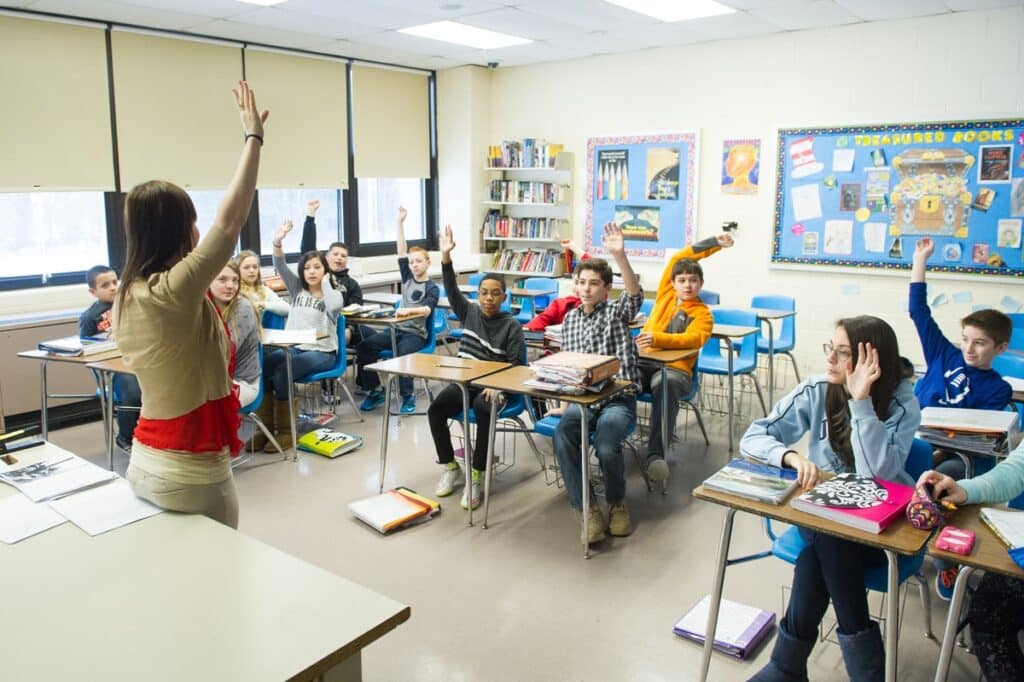
Active teaching is a straightforward, developmentally appropriate strategy for delivering active instruction to middle school students in a way that more actively involves students. The teacher is still responsible for presenting and explaining content; however, it’s done in a way that meets young adolescents’ developmental needs for activity and social interaction. Active teaching supports middle schoolers in becoming engaged participants in their learning. This shift in instructional design and delivery makes learning a collaborative process. Students engage in the discovery of content and its application, as well as with peers’ perspectives and feedback.
The three phases of active teaching resemble the three phases of the natural learning cycle:
During the teach and model phase, the teacher introduces new content, gives it context, and depicts it through modeling. This is an opportunity to present content in a way that excites students and ignites their curiosity to learn more. Students engage more deeply with the content when a lesson incorporates demonstrations or open-ended questions.
Tip: Consider how you will represent the new knowledge. You could use a physical representation (such as an image, a graphic organizer, or a physical model), incorporate movement with an interactive learning structure, or have students use their imagination by leading them through a guided visualization.
Student collaboration gives students the opportunity to make sense of what they observed by thinking and talking to each other about key points they noticed. Making students responsible for noting and reacting to what they are being taught communicates to them that their ideas are necessary and valued. This helps meet students’ needs for belonging and significance, which, combined with opportunities to talk and collaborate with peers, leads to increased engagement and retention of content.
Tip: Pick a conversation structure (whether partner chats or small group work) and questions or sentence starters that you think will spark meaningful discussion.
The final phase of active teaching allows students to develop metacognition. Students make meaning of their learning by thinking about how they experienced that learning. When students become aware of what they learned and how they learned it, they build confidence in applying the new knowledge or strategy. Reflection helps solidify what we’ve learned and understand how we’ve learned it.
Tip: Try a discussion activity, writing activity, or art activity that will help students focus on the specific goals of reflection.
You can read more about active teaching in Building an Academic Community and the Replacing Direct Teaching with Active Teaching Quick Coaching Guide. Learn how to use the practice in your classroom by joining us at The Responsive Classroom Middle School Course. Also be sure to check our Active Teaching Lesson Planning Guide, a free resource that will help you plan lessons that honor middle school students’ developmental needs.